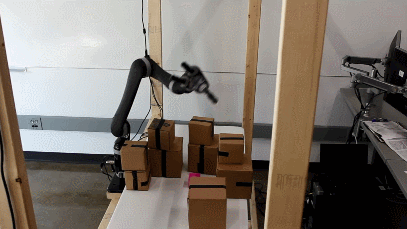
Motion planning for robots with multi-jointed arms is harder than it looks. It requires a fast processor and lots of computation. Duke University researchers have designed a computer processor that can plan up to 10k times faster than existing approaches.
The processor is fast enough to plan and work in real time. Here is how the technology works:
The technology works by breaking down the arm’s operating space into thousands of 3D volumes called voxels. The algorithm then determines whether or not an object is present in one of the voxels contained within pre-programmed motion paths. Thanks to the specially designed hardware, the technology can check thousands of motion paths simultaneously
More information is available on Duke University’s website.













































